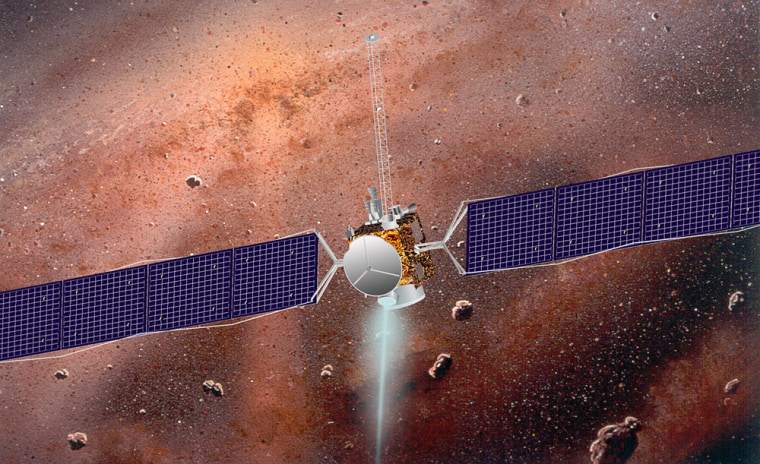NASA has canceled a mission to visit two asteroids, five months after the program was told to stand down because of cost overruns and technical problems.
The cancellation, announced Thursday, is the latest setback for NASA, which has been forced to delay science missions to focus on developing a new manned spacecraft to return to the moon in the next decade.
Earlier this year, the space agency said it had postponed the planned launch of the Dawn spacecraft this summer as it awaited a review by an independent team. The team presented its findings at a meeting with NASA officials and project scientists in January.
The project was capped at around $371 million, project scientists said previously. But the program was ordered to stand down after scientists asked for an additional $40 million last year. Exact costs were not available Thursday.
Dawn was supposed to lift off in June on a nine-year voyage to two of the solar system's largest asteroids, Ceres and Vesta, which reside in the main asteroid belt between Mars and Jupiter.
The Dawn mission was put on standdown last October after going over budget and suffering several setbacks that included the rupture of two xenon fuel tanks during testing, forcing engineers to reduce the amount of xenon to be loaded in the tanks.
Asteroids are believed to be remnants from the solar system's formation about 4.5 billion years ago, and studying them could provide clues into how the sun and planets formed.
Dawn would have been the first spacecraft to orbit the two asteroids, which scientists believe formed in different parts of the solar system and had different evolutionary processes.
The Dawn spacecraft was to reach Vesta, 220 million miles (350 million kilometers) from Earth, in 2011. It was then supposed to have reached Ceres, about 258 million miles (410 million kilometers) from Earth, in 2015.
It was to spend several months orbiting each asteroid, photographing the surface and studying the interior composition, density and magnetism.
Dawn was part of a NASA program called Discovery that aims to explore the solar system on what the space agency considers to be a shoestring budget. The program includes the Stardust mission, which returned to Earth in January with samples of comet dust.
The Dawn mission was managed by NASA's Jet Propulsion Laboratory in Pasadena.
